Any Greens Pesto
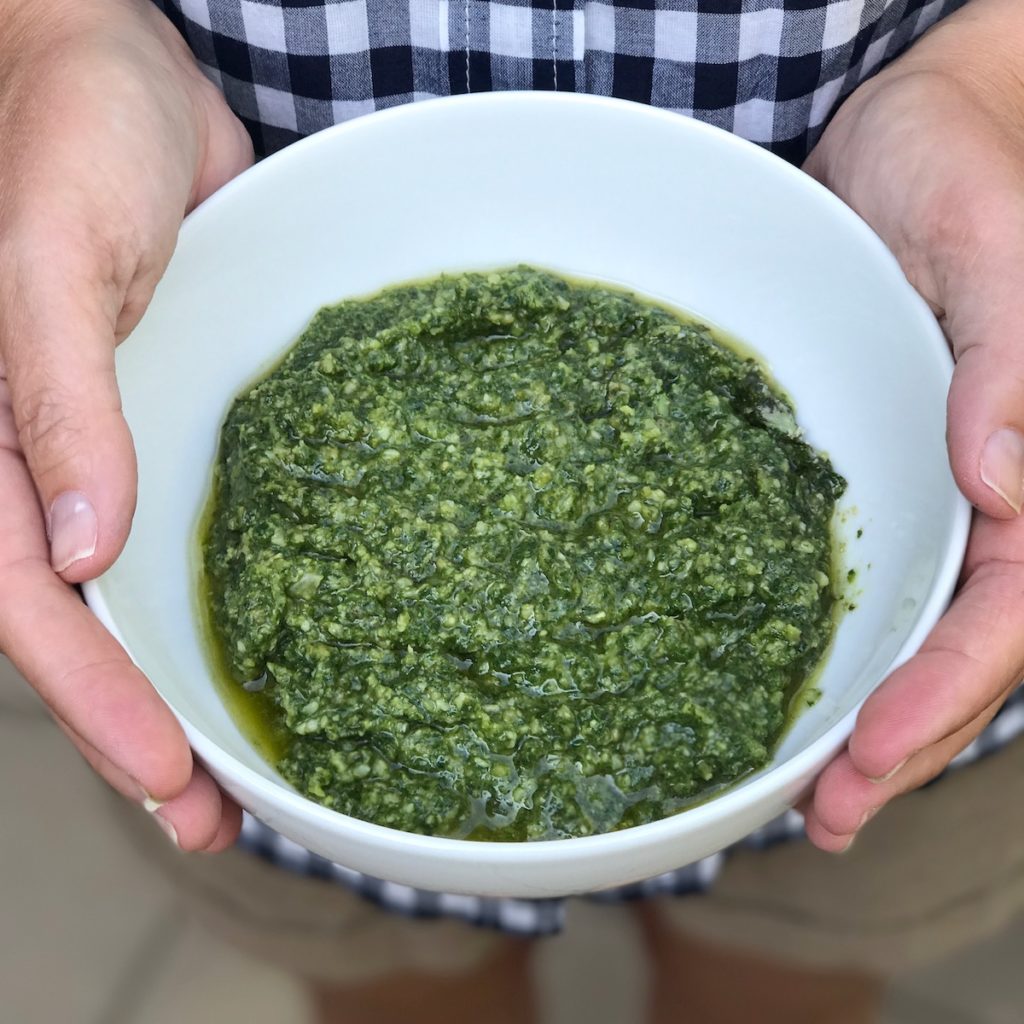
Yes, you can make fresh pesto in January! Maybe not the super traditional Genovese version, but you can make a bright and fresh “any greens” pesto that will be delicious with pasta, as a sauce for fish or chicken or tossed with roasted veggies.
We just came back from a couple weeks in Idaho over the holiday break and my garden is full and lush. The lettuces, leafy greens and herbs are growing like crazy! Time to snip some leaves and make pesto. The fact that all three of my kids would eat this with a spoon makes me extra happy. I freeze small batches of pesto in glass jars or you can use Souper Cubes (which I absolutely love for freezing stock and soups!).
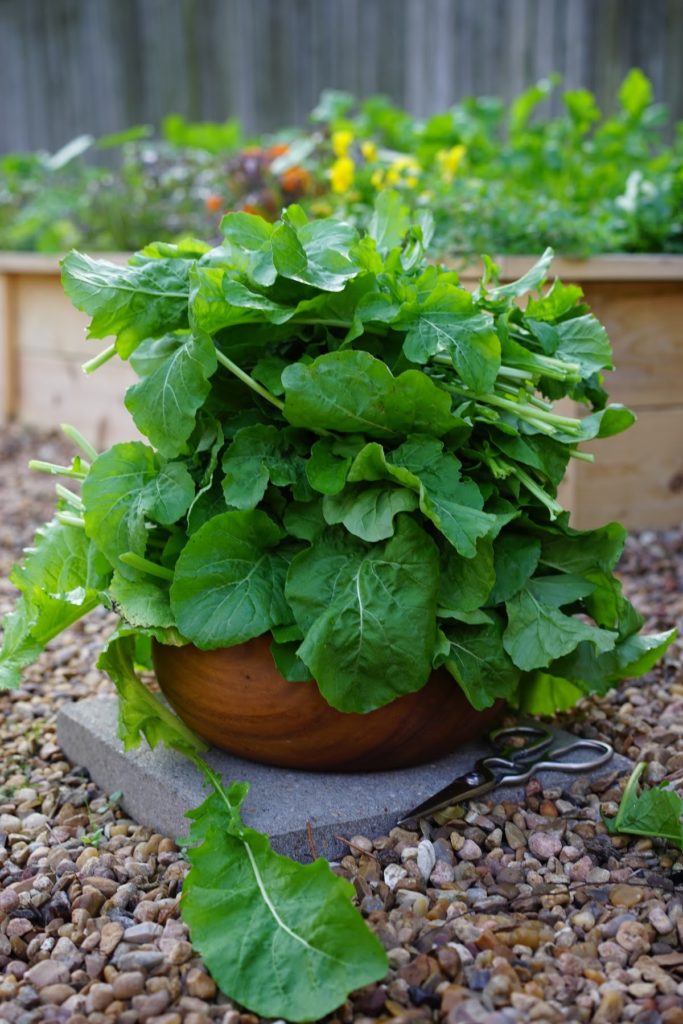
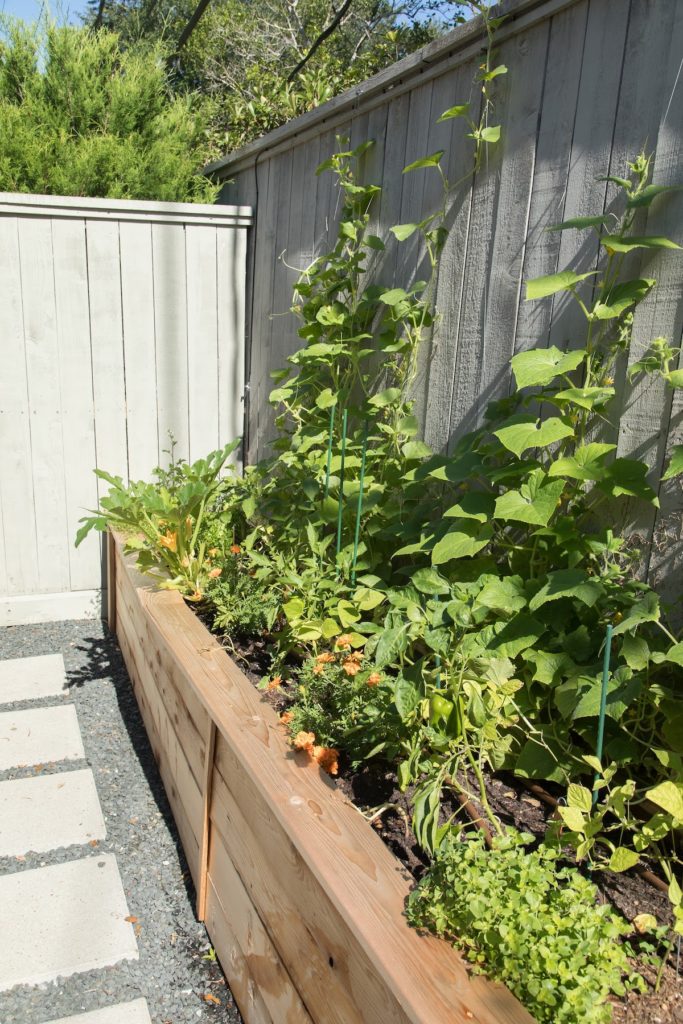
What is pesto used for?
Pesto can act as a sauce or a flavorful garnish. Of course, most often it’s a sauce for pasta, but it’s also delicious drizzled on pan-seared ribeye, salmon, spatchcocked chicken, and roasted vegetables. Spread pesto on turkey sandwiches, homemade pizza, grilled flatbread or caprese paninis, or add a tablespoon to your salad dressing and shake it up!
How much pesto should I use on pasta?
For a pound of pasta: Before draining your pasta cooking liquid, reserve a little of the starchy water. Drain the pasta and add 1/2 cup pesto to the cooking pot. Add the warm cooked pasta (DO NOT rinse it with water!) and about 1/4 scant cup of the cooking liquid. Toss to coat. Adding the pasta water will help the pesto adhere to the pasta and create a silky and saucy consistency, rather than dry and sticky glob of pasta. Taste and adjust salt and pepper if necessary.
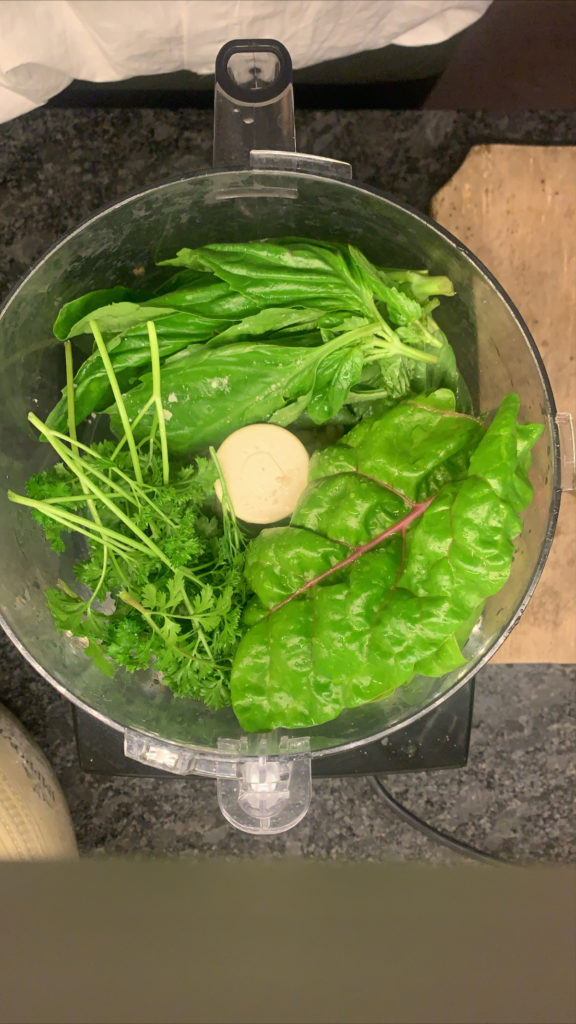
What kind of nuts can I use?
Walnuts, almonds, pecans, pine nuts, pistachios, sunflower seeds, pumpkin seeds, peanuts — basically almost any nut or seed you like the.
What kind of cheese can I use in pesto?
Parmesan lends an umami kick to traditional basil pesto, but it isn’t your only option—any hard, salty, aged cheese (Italian or not) will get you there. Try Grana Padano, Pecorino or even Manchego. (There are Italian grannies currently rolling in their graves…)
How long will pesto last in the fridge?
Store pesto in glass jars or airtight containers in the refrigerator for about a week or in the freezer for about 6 months. Be sure to label and date!
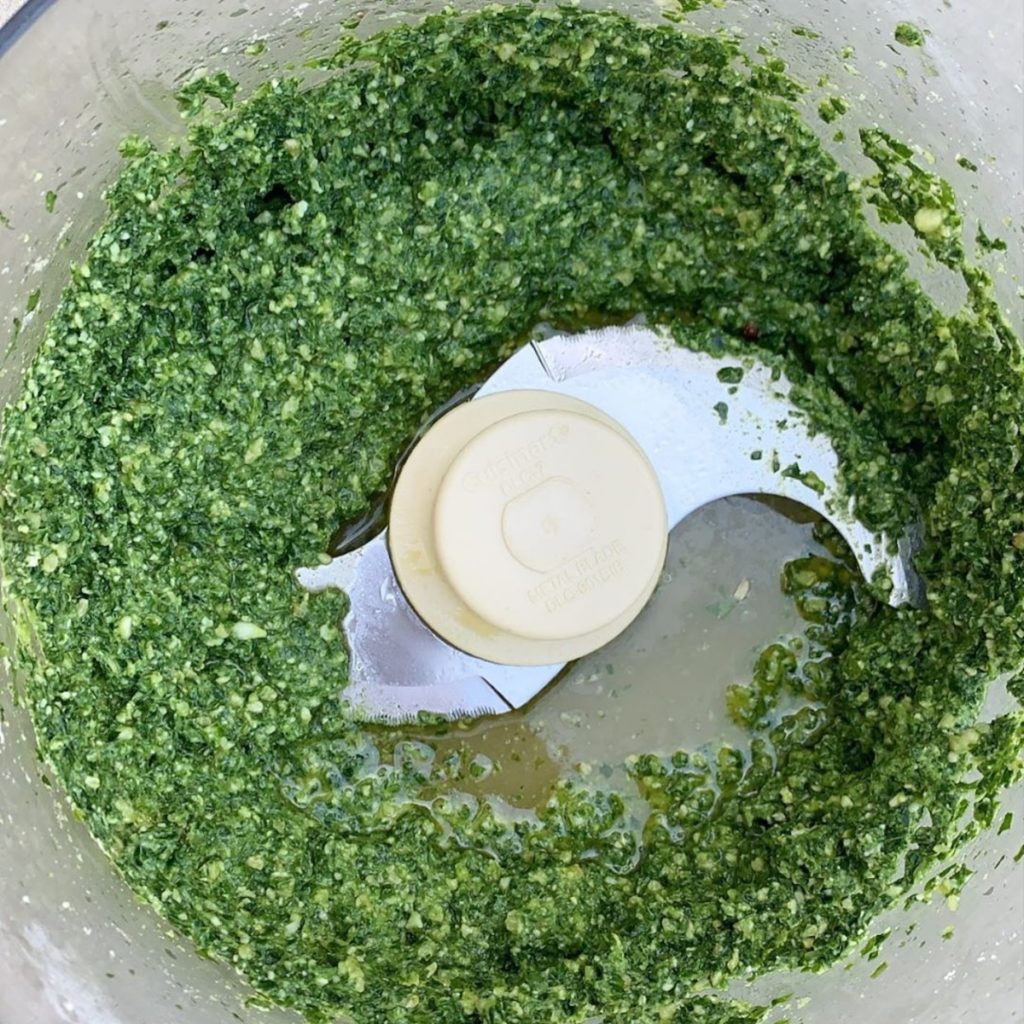
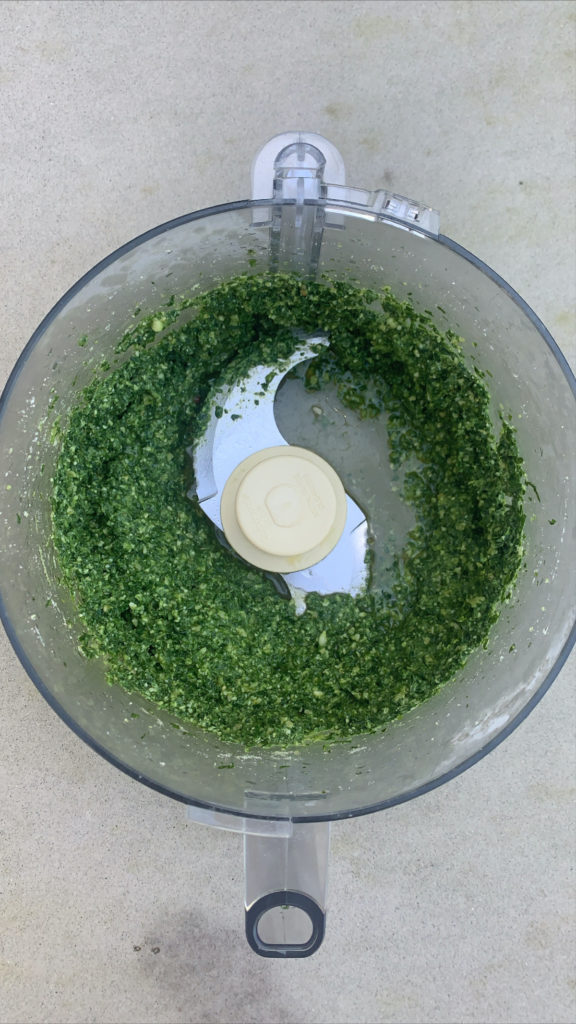
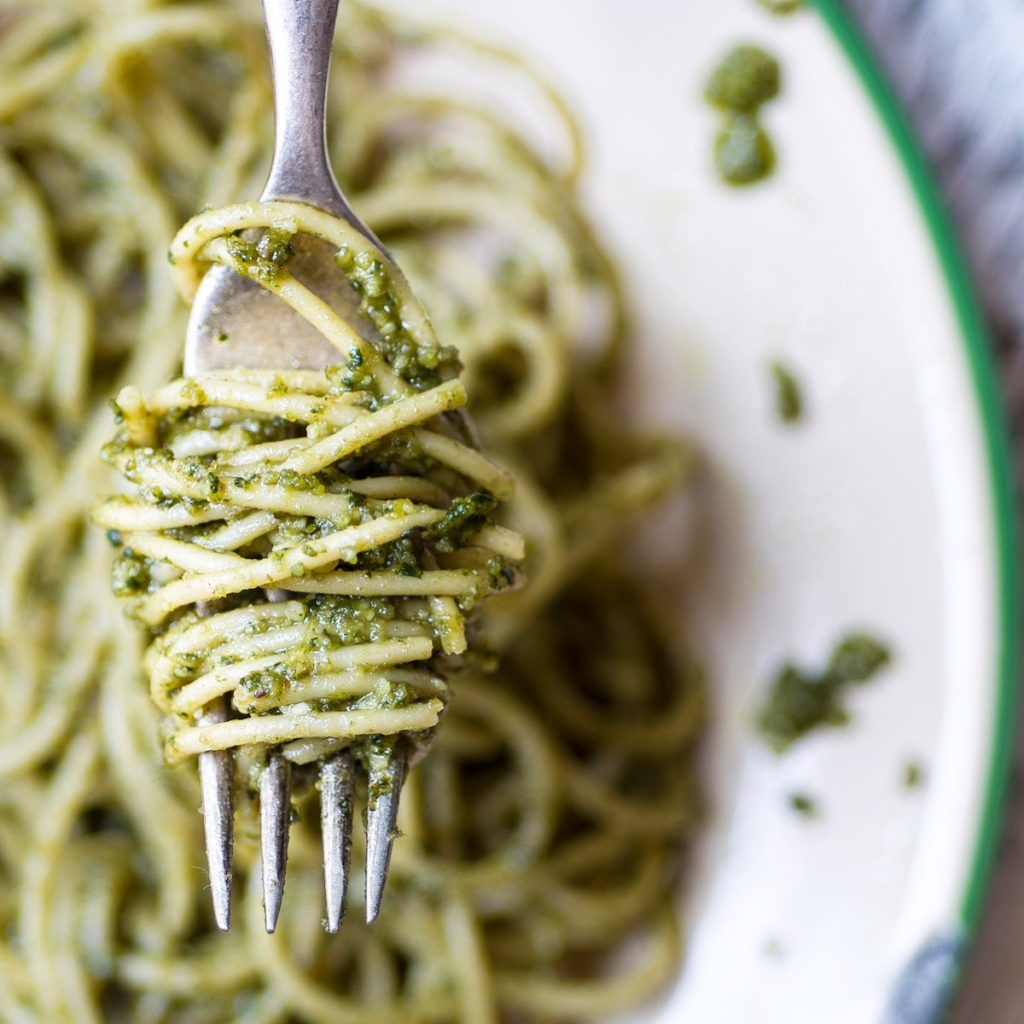
Looking for more sauce recipes?
Arugula, Basil, and Avocado Pesto (Whole30)
Chermoula
Traditional Argentinian Chimichurri
Romesco
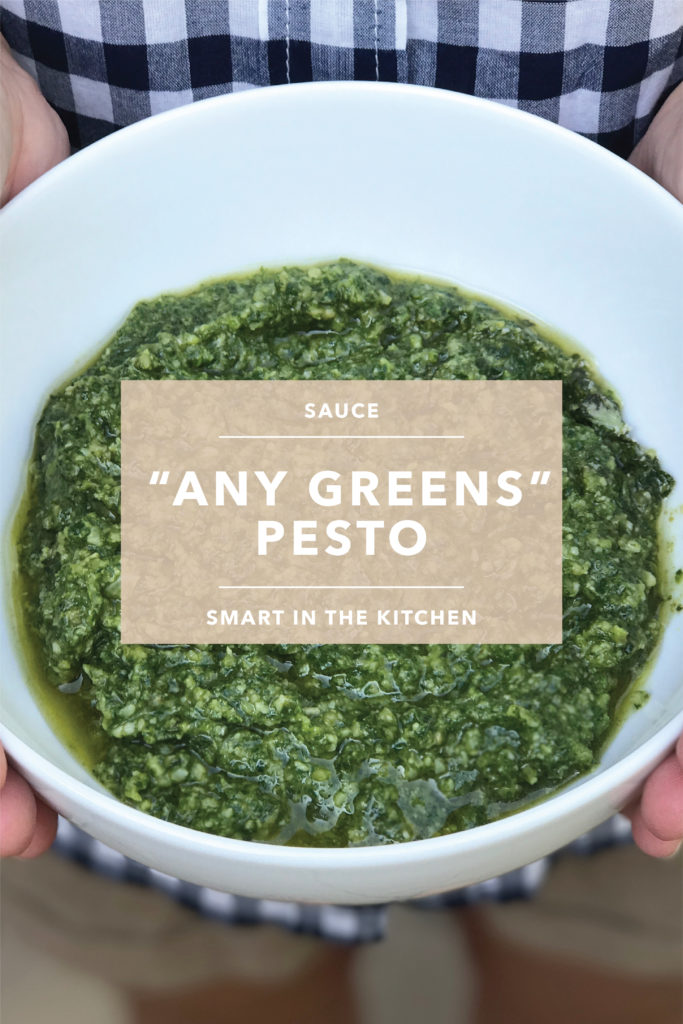
“Any Greens” Pesto
Ingredients
- 1/4 cup almonds, pecans, pistachios, walnuts or pine nuts
- 1/2 cup (about 2 oz) freshly grated Parmigiano Reggiano, Pecorino or Grana Padano
- 3 tightly packed cups greens (basil, spinach, arugula, kale, Swiss chard, collard greens, parsley, beet greens, carrot top leaves or a combination of the above)
- 1 large clove garlic, peeled and smashed about 1 teaspoon
- 2 tablespoons fresh lemon juice, plus more to taste
- fresh cracked pepper to taste
- 1 teaspoon Kosher or sea salt to taste
- 1/2 to 3/4 cup extra-virgin olive oil
Instructions
- Place the nuts, cheese, greens, garlic, and 2 tablespoons lemon juice in the bowl of a food processor. Season with pepper to taste and a few pinches sea salt.
- Pulse in quick on/off bursts until the mixture is finely chopped but not completely puréed, about 15 times. Scrape down the processor and pulse again to incorporate any larger leaves necessary.
- In the feed tube in the top of the food processor, add the olive oil and combine, being careful not to over puree the mixture. Stir in more salt and pepper to taste if necessary. Store in a glass jar in the refrigerator for about a week; add a thin layer of olive oil on top of the pesto to keep it from oxidizing.
- Note: Can be frozen in ice cube trays or glass containers.
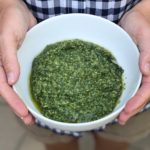
Had to use up some mixed greens and this was perfect. I still added a small pack of basil (because what’s pesto without it?) but I think I just discovered an actually affordable way to make fresh pesto!! Thank you!